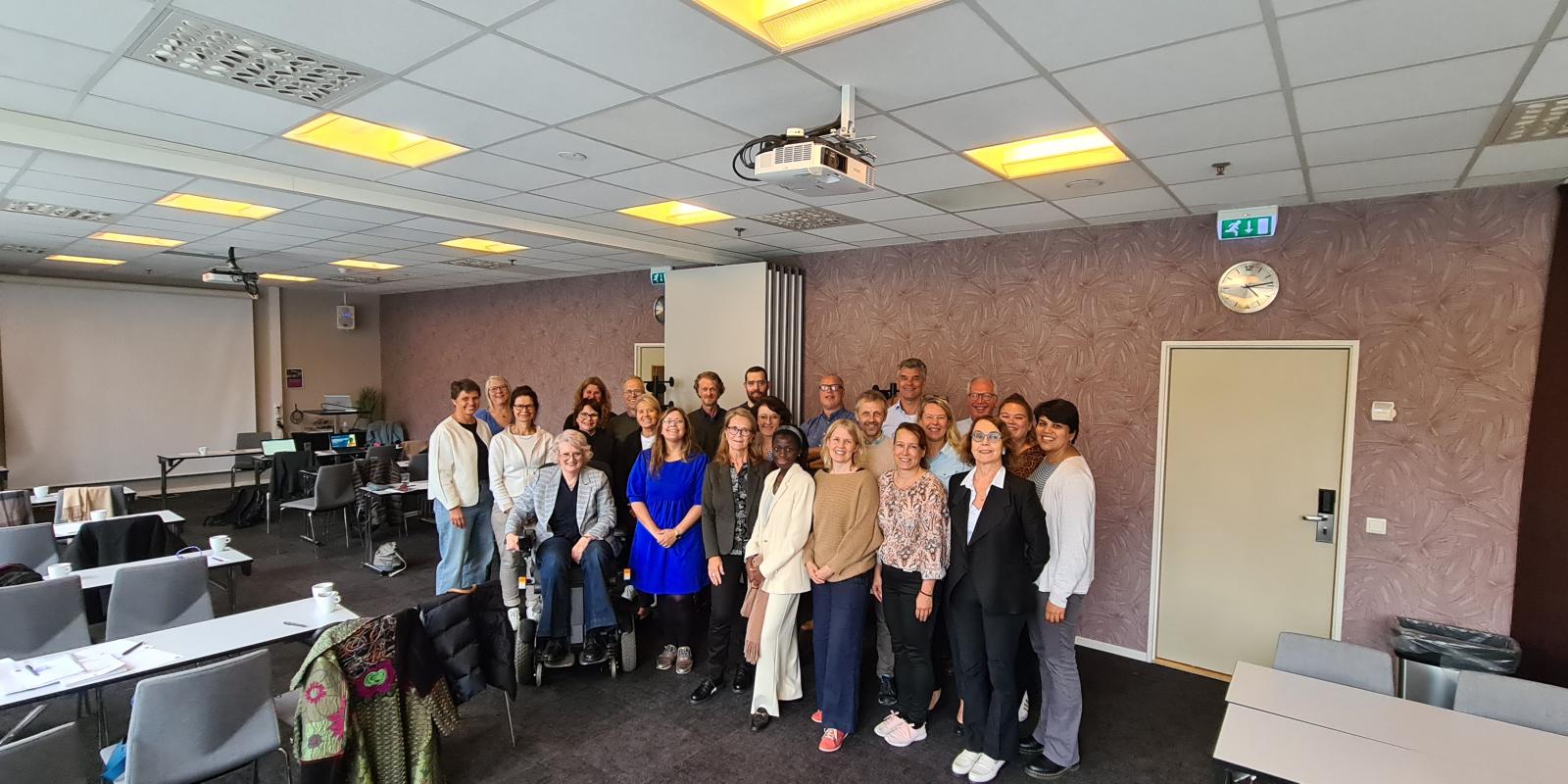- Our goals for this meeting were to share the latest research findings and developments in communication and decision-making in the field, says Miek Jong, Director of NAFKAM. -We also aimed to discuss strategic goals for their facilitation in supportive cancer care and to inspire collaborative projects, particularly in the Nordic countries.
The meeting presented a unique opportunity to discuss a wide range of topics around CAM in supportive cancer care with a varied group of participants, each contributing with their own expertise and experience to the meeting: researchers, clinicians, information specialists, patients, and members of patient and practitioner organizations.
Norway, Sweden, Finland and the Netherlands were represented by NAFKAM, the Norwegian Cancer Society, the Norwegian Naturopaths’ Association (NNH), St. Olav’s University Hospital, Mid Sweden University, the Regional Cancer Centre Stockholm Gotland; the Finnish Tampere University; the Dutch Maxima Center for Pediatric Oncology, the Louis Bolk Institute and the Van Praag Institute (NL).
CAM – not for the cure of cancer, but to support and strengthen
The meeting consciously focused on CAM as a supportive treatment as the presented research confirmed that European cancer patients do not use CAM to primarily cure their cancer: -Cancer patients primarily use various forms of CAM to increase quality of life, cope with the cancer and for relaxation/ well-being, says Agnete E. Kristoffersen, senior researcher at NAFKAM.
From establishing evidence to developing tools and communication: safety first
Starting off with presentations of recent research studies on efficacy, the focus moved to communication: tools and education programmes for medical professionals, evidence-based information in practical application, perception of risk among conventional and complementary healthcare providers, CAM use of cancer patients, tools for cancer patients, and insights from cancer patients and their carers (A selection of interesting articles presented in Tromsø can be accessed via the list at the bottom of this page).
All presentations informed the discussion to formulate the strategic goals for facilitating communication and education in CAM for cancer: evidence-based information, education as well as open and effective communication are all crucial elements in ensuring safe and effective patient care.
The way forward: Working together
- The meeting showcast the number of successful research and communication projects already conducted and implemented in the respective countries, says NAFKAM's Miek Jong. – With patient safety as the highest priority, delegates have taken concrete steps to share materials and resources across all countries, particularly in the areas of educational materials including online courses and the development of tools for patients and healthcare professionals.
Further reading
- Wider B, CAM Cancer Collaboration. CAM Cancer [online database], Nov 28, 2022.
- Jong MC, Stub T, Mulder E, Jong M. The Development and Acceptability of a Wilderness Programme to Support the Health and Well-Being of Adolescent and Young Adult Cancer Survivors: The WAYA Programme. Int J Environ Res Public Health. 2022 Sep 22;19(19):12012. doi: 10.3390/ijerph191912012. PMID: 36231313; PMCID: PMC9566286.
- Kristoffersen AE, Nilsen JV, Stub T, Nordberg JH, Wider B, Mora D, Nakandi K, Bjelland M. Use of Complementary and Alternative Medicine in the context of cancer; prevalence, reasons for use, disclosure, information received, risks and benefits reported by people with cancer in Norway. BMC Complement Med Ther. 2022 Jul 29;22(1):202. doi: 10.1186/s12906-022- 03606-0. PMID: 35906578; PMCID: PMC9336131
- Mora DC, Overvåg G, Jong MC, Kristoffersen AE, Stavleu DC, Liu J, Stub T. Complementary and alternative medicine modalities used to treat adverse effects of anti-cancer treatment among children and young adults: a systematic review and meta-analysis of randomized controlled trials. BMC Complement Med Ther. 2022 Apr 2;22(1):97. doi: 10.1186/s12906-022- 03537-w. PMID: 35366871; PMCID: PMC8976304
- Nakandi K, Mora D, Stub T, Kristoffersen AE. Conventional health care service utilization among cancer survivors that visit traditional and complementary providers in the Tromsø study: a cross-sectional study. BMC Health Serv Res. 2022 Jan 11;22(1):53. doi: 10.1186/s12913-021-07445-6. PMID: 35016666; PMCID: PMC8751219.
- Mentink M, Noordman J, Busch M, van Vliet L, Timmer-Bonte JA, van Dulmen S. Towards an open and effective dialogue on complementary medicine in oncology: protocol of patient participatory study 'COMMON'. BMJ Open. 2021 Oct 20;11(10):e053005. doi: 10.1136/bmjopen-2021- 053005. PMID: 34670766; PMCID: PMC8529983.
- Jong MC, Boers I, van Wietmarschen H, Busch M, Naafs MC, Kaspers GJL, Tissing WJE. Development of an evidence-based decision aid on complementary and alternative medicine (CAM) and pain for parents of children with cancer. Support Care Cancer. 2020 May;28(5):2415-2429. doi: 10.1007/s00520-019-05058-8. Epub 2019 Sep 6. PMID: 31493135; PMCID: PMC7083801.
- Stub T, Quandt SA, Arcury TA, Sandberg JC, Kristoffersen AE. Attitudes and knowledge about direct and indirect risks among conventional and complementary health care providers in cancer care. BMC Complement Altern Med. 2018 Jan 31;18(1):44. doi: 10.1186/s12906-018-2106-z. PMID: 29386005; PMCID: PMC5793440.
